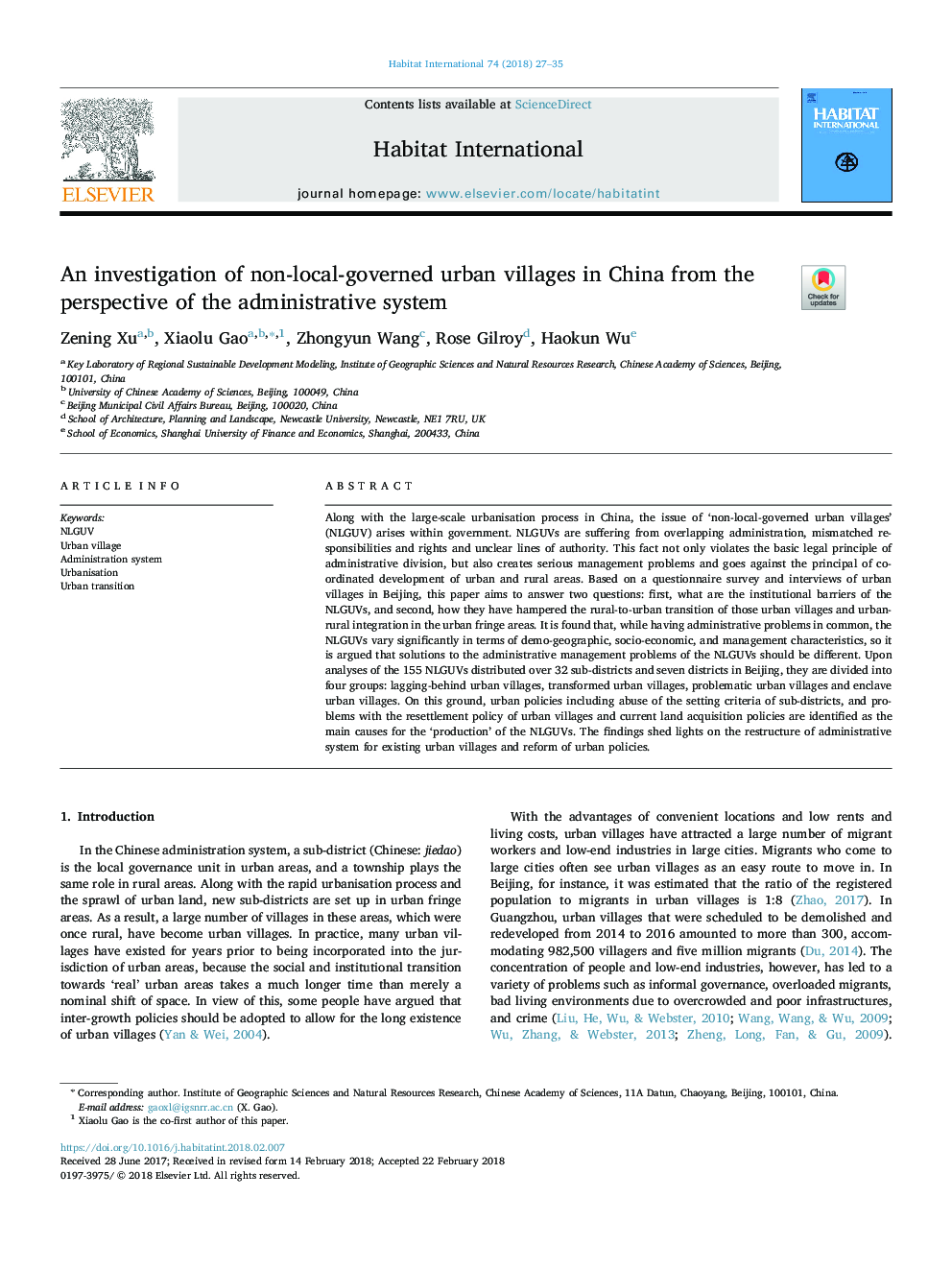| Article ID | Journal | Published Year | Pages | File Type |
|---|---|---|---|---|
| 7455114 | Habitat International | 2018 | 9 Pages |
Abstract
Along with the large-scale urbanisation process in China, the issue of 'non-local-governed urban villages' (NLGUV) arises within government. NLGUVs are suffering from overlapping administration, mismatched responsibilities and rights and unclear lines of authority. This fact not only violates the basic legal principle of administrative division, but also creates serious management problems and goes against the principal of coordinated development of urban and rural areas. Based on a questionnaire survey and interviews of urban villages in Beijing, this paper aims to answer two questions: first, what are the institutional barriers of the NLGUVs, and second, how they have hampered the rural-to-urban transition of those urban villages and urban-rural integration in the urban fringe areas. It is found that, while having administrative problems in common, the NLGUVs vary significantly in terms of demo-geographic, socio-economic, and management characteristics, so it is argued that solutions to the administrative management problems of the NLGUVs should be different. Upon analyses of the 155 NLGUVs distributed over 32 sub-districts and seven districts in Beijing, they are divided into four groups: lagging-behind urban villages, transformed urban villages, problematic urban villages and enclave urban villages. On this ground, urban policies including abuse of the setting criteria of sub-districts, and problems with the resettlement policy of urban villages and current land acquisition policies are identified as the main causes for the 'production' of the NLGUVs. The findings shed lights on the restructure of administrative system for existing urban villages and reform of urban policies.
Related Topics
Social Sciences and Humanities
Social Sciences
Development
Authors
Zening Xu, Xiaolu Gao, Zhongyun Wang, Rose Gilroy, Haokun Wu,
